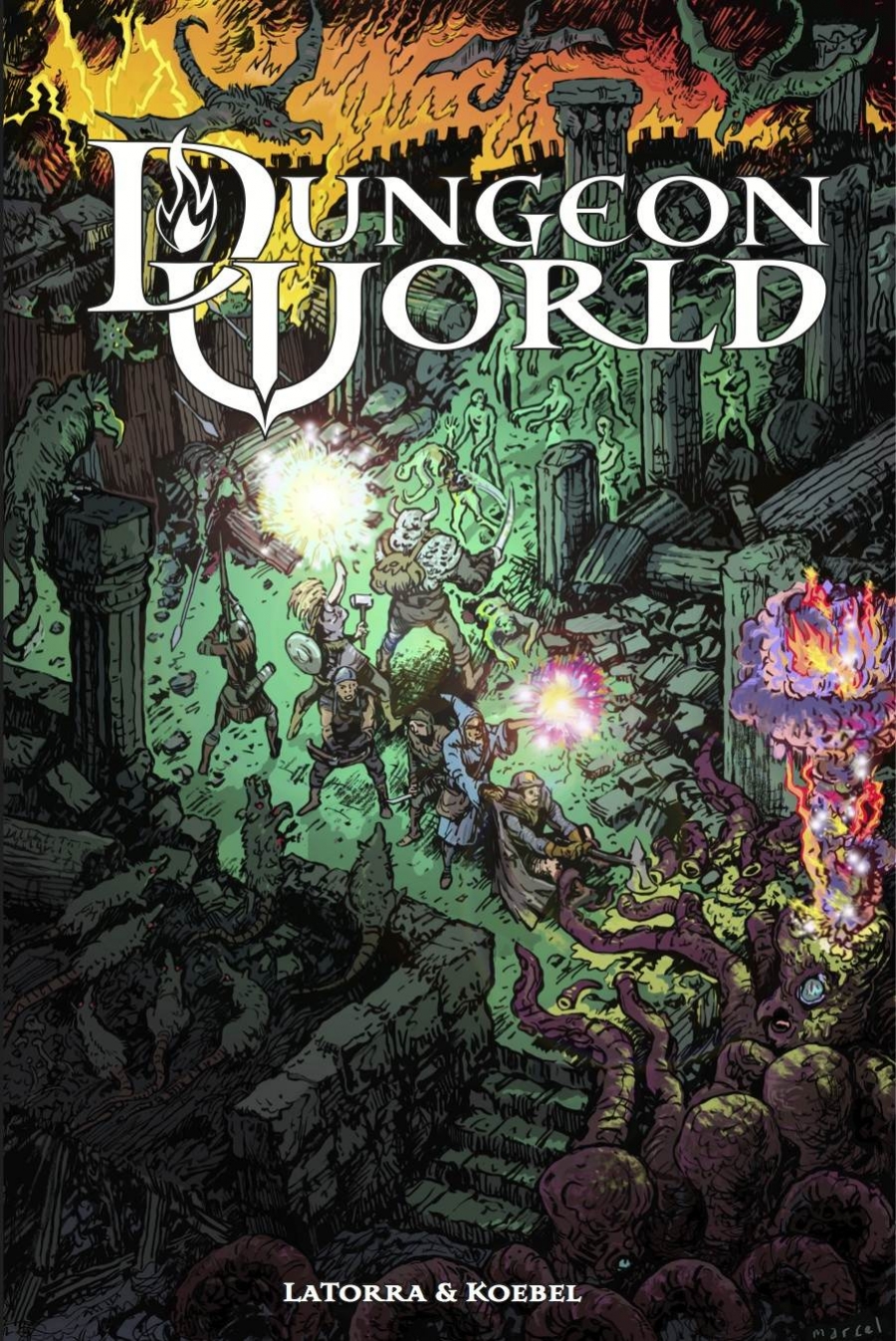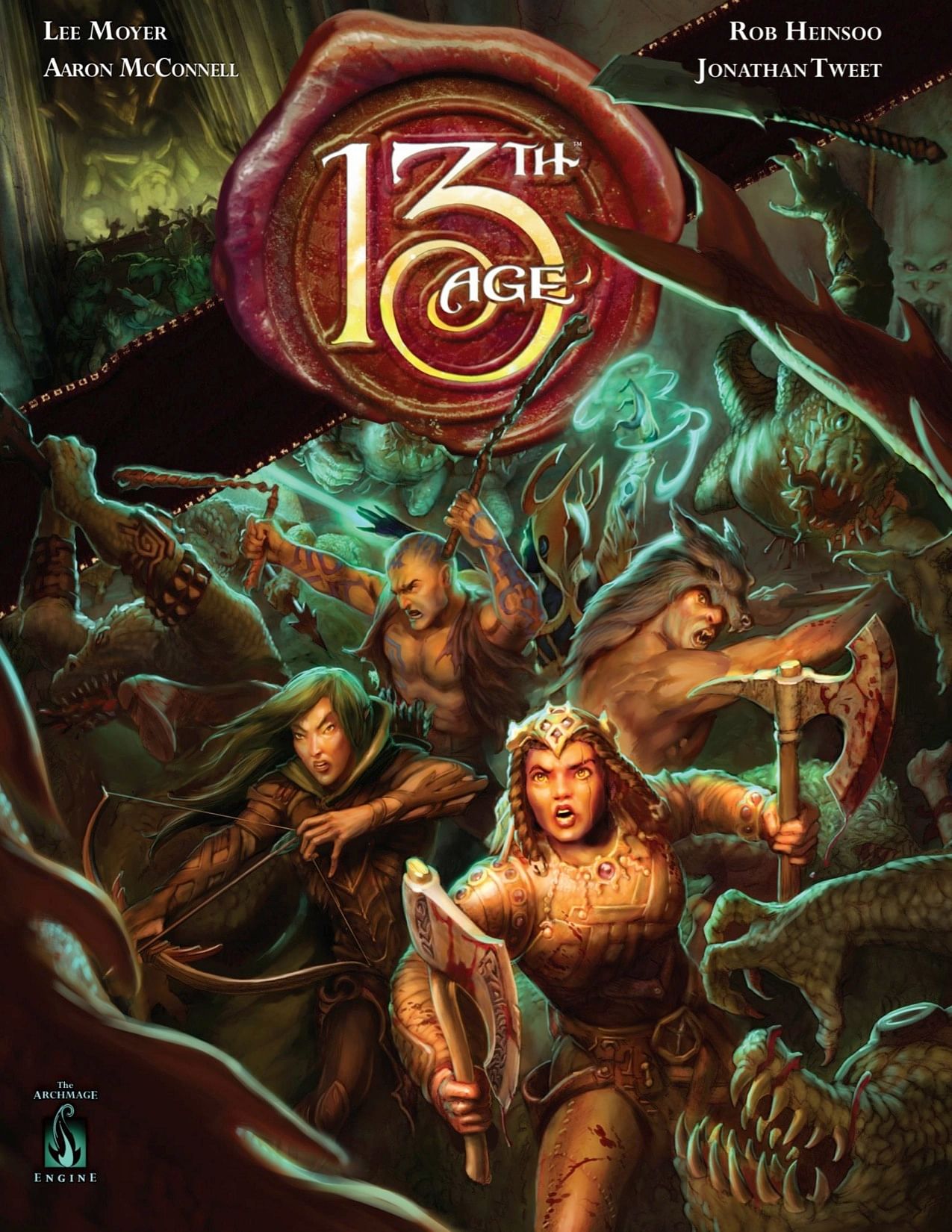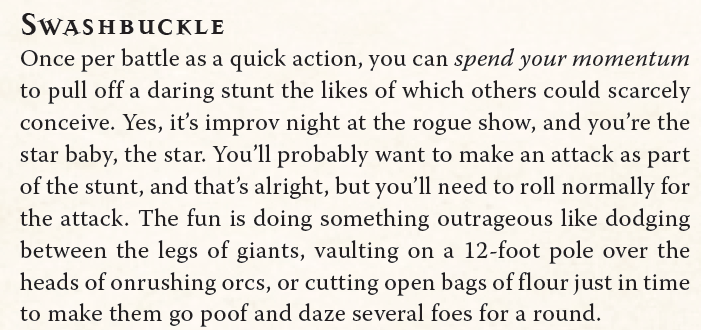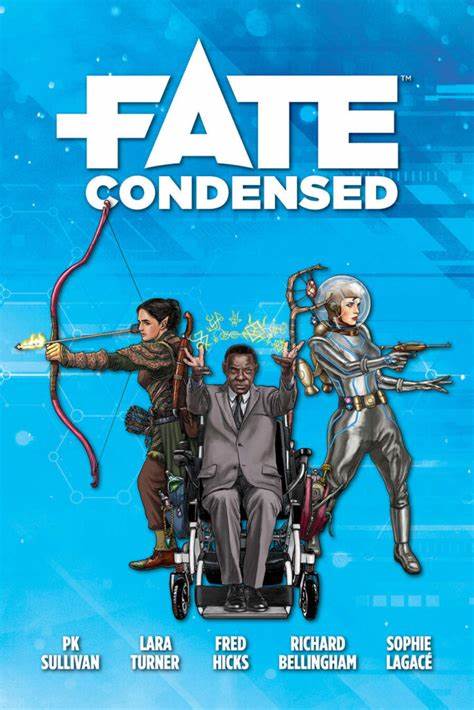I got my start playing role-playing games when, at nine years of age, I got my parents to buy me the 1981 edition of the Dungeons and Dragons Basic Set (the cover said the game was for “three or more adults, 10 years and up,” so I guess you could say I was ahead of my time). I could cite many reasons why RPGs are so exciting for me, but the undisputed top one was that I could tell stories with them. In the four gaming-session-filled decades since then I’ve GMed sessions featuring what I think were great stories and terrible stories, original and derivative stories, sandboxy and railroady stories. I even wrote and published my own science-fiction role-playing game, just so I could write a 254-page campaign to go with it (which, improbably, was nominated for an ENnie for Best Adventure of 2018).
While I’ve always loved D&D, it didn’t take me long to realize that many of the stories I was telling at the table were flowing despite the game rules instead of because of them. Yes, you can use any RPG to tell good stories… but, at least in my experience, some are better at blow-by-blow action than at telling stories featuring traditional building blocks of storytelling such as goals, misbeliefs, obstacles and resolutions; and then supporting these abstract constructs with rules. After many years of exploration I’ve settled on three games that have become my go-to RPGs when I want to run a game that excites everyone at the table and creates a memorable collaborative storytelling experience. In this post I’ll share what those three games are, why they are so exciting to me, and why I’d personally recommend anyone who writes fiction and has only played D&D to give them a try!
(Obvious disclaimer: These are my personal preferences only. Your mileage will vary).
Dungeon World
I’d always wondered why my D&D battles didn’t have the chaotic, unpredictable, edge-of-your-seat, adrenaline-filled vibe of the Mines of Moria troll fight in The Lord of the Rings: The Fellowship of the Ring. I stopped wondering this when I tried Dungeon World.

Loosely based on a set of rules known as Powered by the Apocalypse, Dungeon World builds on a system in which “initiative” is whatever the GM, turned movie director, thinks is coolest for the fight. This includes cutting action mid-scene, switching between characters, or interrupting according to the needs of the story. The probability curve of Dungeon World’s dice mechanic means the most likely outcome of a roll is that a character will achieve their goal but get in more trouble as a result. On top of this powerful complication-inducing structure, Dungeon World overlays a simplified set of traditional D&D concepts such as classes, the six attributes, hit points, and more. The result is a game that looks initially familiar to D&D players but that quickly becomes a feast of breathless, improvised action.
Dungeon World has an SRD available, as well as many hacks. My personal favorite is a variation called Homebrew World. There are many tutorials and reviews available as well.
13th Age
So your players are core D&D enthusiasts who can’t live without classes, hit points, feats, initiative rolls, sturdy character sheets, and d20 to-hit rolls, but you wish your game could have cooler storytelling tools to go with all that? Look no further than 13th Age.

An intoxicating mix of classic D&D and modern improvisational story concepts, 13th Age keeps to the overall structure of D&D while adding rules that foster improvisation and storytelling, such as:
- The Icons, a set of powerful movers and shakers in this world that players can leverage during the adventure (sometimes for a price) to help them along… as long as they can improvise a reason why they’re getting the help;
- One Unique Thing that makes each character special in the world from a role-playing perspective;
- Backgrounds, a replacement for skills that promotes inventing backstories as a prerequisite for characters to make a skill check.
- Interesting classes, such as the Occultist class, of which there is only one in the entire universe, and who has the power to stop and turn back time or change space, even in the middle of a combat round. Yes, it’s as wild as it sounds.
Here are a couple of sample talents from the 13th Age Core Book that show how… interesting things at the table can get:


As a final argument for this game, here’s one of the best short descriptions of 13th Age I’ve ever read, from the official page comparing 13th Age to D&D 5E: The DC cinematic universe runs on 5E, but the MCU runs on 13th Age. DCU is trying to be serious about conserving the legacy of iconic characters like Superman and Batman, whereas Marvel is like, “here’s a talking raccoon.”
And a second edition is on its way!
Fate Core
If you have a bunch of writer friends who are willing to really go out there in terms of exploring storytelling tools for role-playing, check out Fate Condensed. Many games have storytelling tools built into the rules (like the two above), but few can claim that the more narratively defined your character is, the more powerful and flexible they are. Fate Condensed (and its older, bigger sibling, Fate Core) can.

Fate hinges on the concept of an Aspect, a one-sentence narrative statement that is always true, and that can be used during the game to, among other things, obtain bonuses to rolls and take partial control of the story. So that storage room in the smugglers’ hideout can have a mountain of flammable crates in the corner, and your 1920s occult investigator character may be burdened with the secret of what really happened to Titanic, to give a couple of examples. You’ve probably just thought of a few things that could (and should) happen in your game as a result!
But what makes a Fate game so similar to writing or outlining a story is Compels: They are opportunities for the GM (or the players) to suggest story complications or obstacles, usually based on existing Aspects, that can happen and will make a character’s life harder (How about an uncontrollable urge to sneeze while hiding in a closet from the blood-thirsty monster?). Players who accept a compel get a future benefit (called a Fate Point), and players who reject it must pay a Fate Point for the privilege. There are thus built-in incentives for players to get their characters in trouble. I now find myself thinking about a Fate Compel every time I watch a movie, read a book, or outline some of my stories.
If you want to learn more the best place to start is the FATE SRD site, which includes the complete manuals, and tons of additional documentation. The Fate Condensed PDF is also available in a name-your-own-price basis. There are tons of resources to learn the game, but the most famous is probably this one-hour session starring Wil Wheaton, Felicia Day and John Rogers, GM’d by Ryan Macklin, one of the authors of the game.
Conclusion
So those are my three story-heavy RPG favorites. I hope they pique your interest in some of the amazing role-playing games available out there!